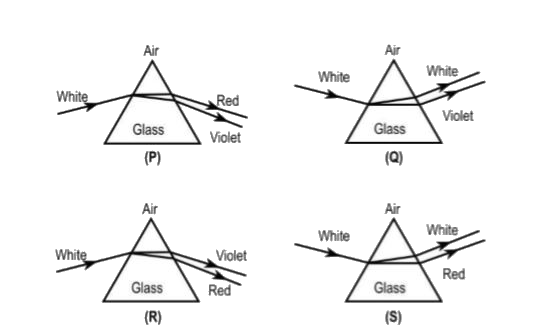Do lights rays actually pass through a virtual image ?
Step-by-Step Solution:
1. Understanding Image Types:
- There are two main types of images formed by lenses and mirrors: real images and virtual images.
- A real image is formed when light rays converge and can be projected onto a screen, while a virtual image is formed when light rays appear to diverge from a point behind the lens or mirror.
2. Behavior of Light Rays:
- In the case of a real image, light rays actually converge at the image location. This means that if you place a screen at the location of the real image, you will see the image projected on the screen.
- For a virtual image, the light rays do not actually converge at the image location. Instead, they appear to diverge from a point behind the lens or mirror.
3. Conclusion about Virtual Images:
- Since virtual images are formed by the apparent divergence of light rays, the light rays do not actually pass through the location of the virtual image.
- Therefore, while we can see a virtual image (like that seen in a flat mirror), the light rays do not physically travel through that point.
4. Example with a Lens:
- Consider a concave lens (a diverging lens). When an object is placed in front of a concave lens, the light rays diverge after passing through the lens. The brain interprets these rays as coming from a point behind the lens, forming a virtual image. However, the light rays themselves do not pass through the location of this virtual image.
Final Answer:
No, light rays do not actually pass through a virtual image. They only appear to diverge from that point, which is why we perceive a virtual image.
---
- There are two main types of images formed by lenses and mirrors: real images and virtual images.
- A real image is formed when light rays converge and can be projected onto a screen, while a virtual image is formed when light rays appear to diverge from a point behind the lens or mirror.
- In the case of a real image, light rays actually converge at the image location. This means that if you place a screen at the location of the real image, you will see the image projected on the screen.
- For a virtual image, the light rays do not actually converge at the image location. Instead, they appear to diverge from a point behind the lens or mirror.
- Since virtual images are formed by the apparent divergence of light rays, the light rays do not actually pass through the location of the virtual image.
- Therefore, while we can see a virtual image (like that seen in a flat mirror), the light rays do not physically travel through that point.
- Consider a concave lens (a diverging lens). When an object is placed in front of a concave lens, the light rays diverge after passing through the lens. The brain interprets these rays as coming from a point behind the lens, forming a virtual image. However, the light rays themselves do not pass through the location of this virtual image.
No, light rays do not actually pass through a virtual image. They only appear to diverge from that point, which is why we perceive a virtual image.
Topper's Solved these Questions
- REFLECTION AND REFRACTIONBOOK - PRADEEPCHAPTER - REFLECTION AND REFRACTIONEXERCISE - Short Q/A (3 marks)
35 Videos
- REFLECTION AND REFRACTIONBOOK - PRADEEPCHAPTER - REFLECTION AND REFRACTIONEXERCISE - long Q/A
7 Videos
- REFLECTION AND REFRACTIONBOOK - PRADEEPCHAPTER - REFLECTION AND REFRACTIONEXERCISE - long answer question
9 Videos
- MAGNETIC EFFECTS OF ELECTRIC CURRENTBOOK - PRADEEPCHAPTER - MAGNETIC EFFECTS OF ELECTRIC CURRENTEXERCISE - Mock Test
21 Videos
- SOURCES OF ENERGYBOOK - PRADEEPCHAPTER - SOURCES OF ENERGYEXERCISE - Mock Test
20 Videos
Similar Questions
Knowledge Check
For a light ray passing through a prism
Aangle of deviation increases when angle of incidence is increasedBangle of deviation decreases when angle of deviation is increasedCWhen angle of incidence is increased or decreased from a particular value then in both cases angle of deviation increases.DAngle of deviation is approximately proportional to the refracting angle of prism provided prism is very thin.An object in which no light rays can pass through is called
AconvexBopaqueCtranslucentDtransparentWhen a ray passes through a prism,
Ait goes undeviatedBit remains parallel to the baseCit bends towards the baseDnone of these
Real image and Virtual image
View SolutionA converging lens has a focal length of 30cm. Rays from a 2.0cm high filament that pass through the lens from a virtual image at a distance of 50cm from the lens. Where is the filament located? What is the height of the image?
View SolutionA spherical air bubble is embedded in a piece of glass. For a light ray passing through it the bubble behaves as a __________.
View SolutionWhat is lateral displacement of a light ray passing through a glass slab ?
View SolutionThe path of light rays passing through a glass prism is BEST represented by ________

View Solution